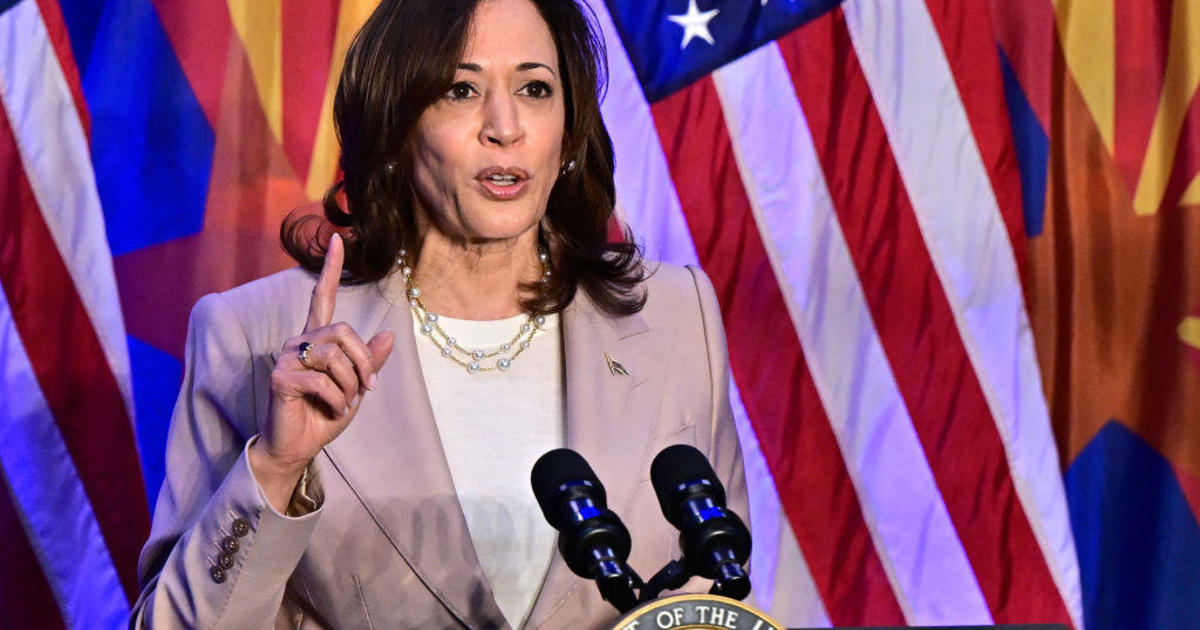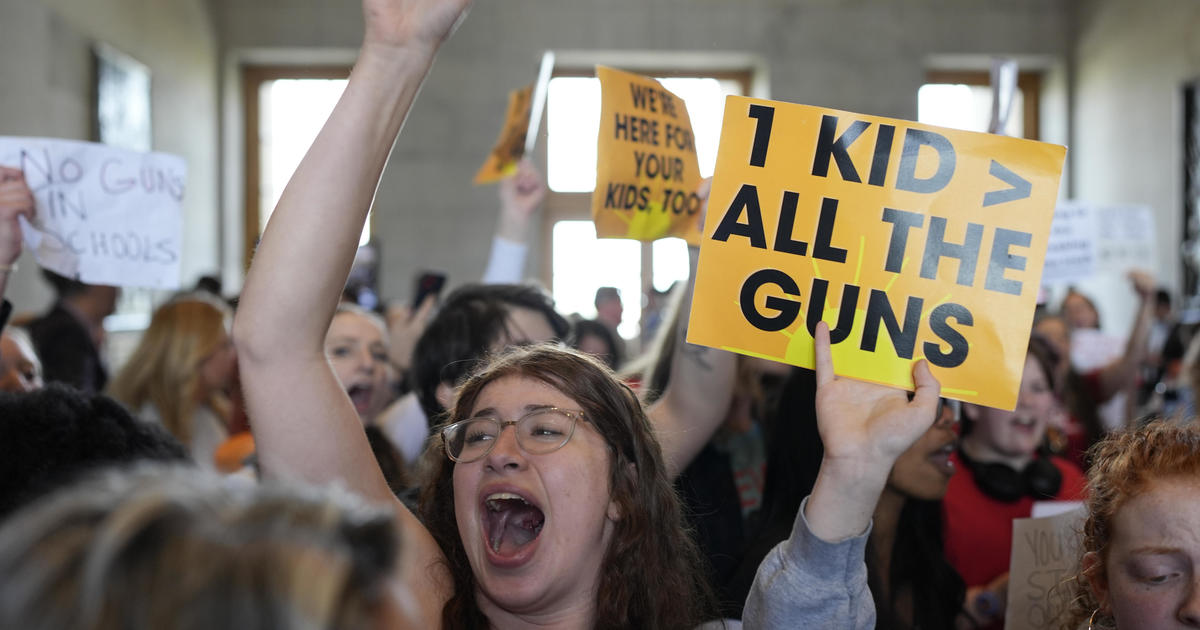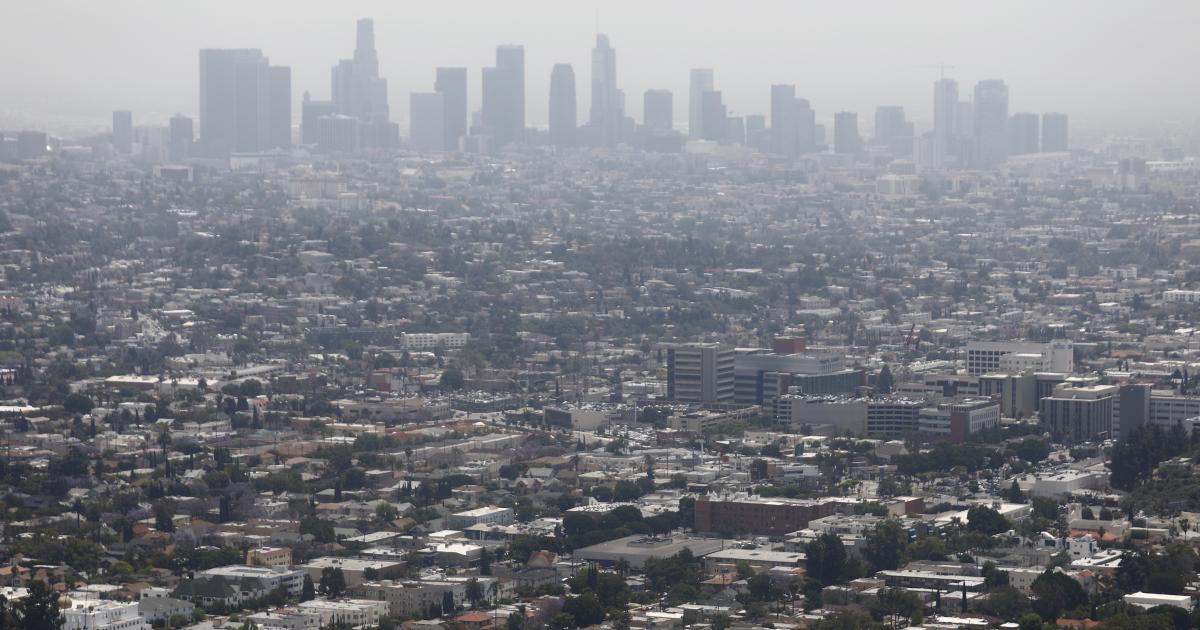Republicans narrow voter registration gap in swing states
There are still more people registered as Democrats than Republicans in the battleground states of Florida, North Carolina and Pennsylvania, but Republicans have been gaining ground.
There are multiple forces at play: Republicans are making strides with registering voters, the two-party system is losing its appeal — especially with young people — and Democrats are being purged from the rolls as they either move out of those states or aren't showing up at the polls.
"The people who have been removed from the file since [2016] are more Democrats than Republicans," said Tom Bonier, CEO of TargetSmart, a nonprofit politics data firm. "Overwhelmingly, those people didn't vote in 2016. What that tells you is these are people who had already either moved from the state or already died prior to November 2016, and they just hadn't been removed at that point."
The latest national CBS News Battleground Tracker poll shows Joe Biden with a 10-point lead among likely voters, but that lead narrows to within the margin of error in several key states, meaning the race could come down to who shows up at the polls on or before Election Day.
Both the Trump and Biden campaigns are actively working to boost their party registration numbers. Heading into Trump rallies, volunteers with clipboards can be spotted in the crowds making sure supporters are signed up to vote. Joe Biden's campaign started airing ads this week in North Carolina and Florida informing residents about the registration deadline.
"If you are not registered it only takes a few minutes to get registered," says the narrator before pushing to the voting website funded by Democrats.
With early October voter registration deadlines looming in many states, Democrats' advantage has narrowed.
North Carolina
Total Registered Democrats (net -6.17% change)
Total Registered Republicans (net 3.47% change)
Among the battleground states, Democrats have seen the greatest overall decrease in net registered voters in North Carolina. According to September voter registration numbers, they have 6.1% fewer registered voters than in November 2016. Republicans have gained nearly 3.5% more.
Though President Trump won North Carolina in 2016, Democrats still hold an overall advantage in registered voters, and elected a Democratic Governor, Roy Cooper.
"It is a very purple state. It is probably the purplest state in the nation right now," said Democratic Strategist Morgan Jackson, who advises Cooper and Democratic Senate candidate Cal Cunningham. "It remains a 50/50 state because at the same time Democrats are running up just insane numbers in the urban and suburban areas, Republicans are getting stronger and stronger in the rural areas."
As North Carolina's total number of registered Democrats dwindles, the largest growth in registrations totals there has been among those not choosing either party – the number of unaffiliated voters in the state has increased 324,000 since November 2016.
"The truth of the matter is it's sort of in vogue to be unaffiliated. They look at what's going on in Washington and partisan gridlock and breakdown, and there's just not a real reason to register as an affiliated if you're coming out of college and coming out of high school, it's just not really the cool thing to do," said Jackson. "But the truth is, when they go to the ballot box, we see them overwhelmingly choosing sides for Democrats."
In new voter registration, Democrats have outpaced Republicans by about 63,000 in North Carolina, according to data from TargetSmart. But among registered voters, Republicans have proven more reliable about showing up to vote.
"Typically, the highest turnout group is going to be registered Republicans in the state, followed by registered Democrats, and then the lowest turnout group is registered unaffiliated," said Dr. J. Michael Bitzer, professor of politics and history at Catawba College.
Pennsylvania
Total Registered Democrats (-1.5%)
Total Registered Republicans (3.7%)
In Pennsylvania, a state that before 2016 hadn't selected a GOP presidential candidate since 1988, Democrats' voter registration edge has fallen by nearly 200,000, but they still hold an advantage of about 724,000 over the GOP. If only voters deemed active are counted, the margin shrinks to about 550,000. Some 7,500 more Democrats than Republicans have switched to a new party this year. To some extent, the registration changes reflect regional shifts that took place in the 2016 election.
Republicans have improved their voter registration standings in all three longtime Democratic counties that voted for Mr. Trump in 2016. Among them, the change is most significant in Luzerne County, which Mr. Trump won by 25,000 votes. There, Republicans have narrowed their registration deficit by 12,500 to under 22,000.
"We know that in 2016, with only about 36% of registrations, we won by 58%," said Justin Behrens, chair of the Luzerne Republican Party. "Now that registration number is even higher. It shows that the numbers are going to skew way more towards President Trump than before."
Meanwhile, Republicans for the first time in recent history outnumber Democrats in Western Pennsylvania's Westmoreland County, which has voted for Republican presidential candidates for two decades but gave Mr. Trump a major boost in 2016.
On the flipside, Democrats have strengthened their voter registration numbers in the largely blue suburbs of Philadelphia. There, they've also narrowly overtaken a previously Republican-leaning area, Chester County, which Hillary Clinton. It now has more registered Democrats than Republicans.
Statewide, the number of independent or third party Pennsylvanians has increased by more than 61,000, or 5%, since 2016. More than 21,000 Democrats and 13,000 Republicans have dropped their party registration since the beginning of this year. In Luzerne, the number of independent or third party voters increased by 15% and in Chester by nearly 6.5% since 2016, showing how much less they're inclined to identify with either of the two major parties.
Overall, Democrats have registered about 132,000 more new voters than Republicans since the 2016 election, according to TargetSmart. Bonier said the raw registration data appears to show Democrats weakening only because in 2016 it appeared to favor them more than it actually did.
"Pennsylvania wasn't as Democratic as we thought it was in November 2016," he said.
But Lawrence Tabas, the chair of the Pennsylvania Republican Party, is skeptical of TargetSmart's analysis. "Of course they're coming up with that excuse," he said. "I think they're incorrect based on the public data made available to the Department of State."
Florida
Registered Democrats (net 5.8% change)
Registered Republicans (net 9.6% change)
In Florida, both Democrats and Republicans have gained in total registered voters since 2016. But here, too, Republicans are cutting into Democrats' advantage. Since 2016, Democrats have added more than 289,000 voters to their net total, about a 5.8% change. Republicans have gained more than 442,000 voters, a nearly 10% change. That closes the gap to just over 183,000 active registered voters.
This comes as the state has also removed nearly 1.4 million active and inactive voters from the system since the beginning of 2017 for a number of reasons, including moving out of state and death.
But according to TargetSmart, Democrats have added about 54,000 more new voters to their rolls than Republicans in Florida since 2016. Another 26% of voters are not affiliated with a party. In 2016, Mr. Trump won the state by about 112,000 votes.
Arizona
Registered Democrats (net 18.4% change)
Registered Republicans (net 12.1% change)
In Arizona, it's Democrats who are closing the gap on net registrations. While Republicans maintain their registered voter advantage overall, Democrats have made attention-grabbing growth in the state since 2016.
According to the latest voter registration data in the state, Democrats have seen a more than 18% increase in registered voters in about four years, increasing from a little over 1 million voters in 2016 to nearly 1.3 million voters as of August. Republicans in the state have added about 150,000 voters to their total, but it comes out to about a 12% increase, meaning the gap is shrinking to a just over 50,000 registered voter advantage. Over 31% of voters in the state aren't registered with either party.
Meanwhile, in the state's biggest county — and biggest battleground — Maricopa County, Republicans maintain their advantage, a data point local GOP party officials have touted ahead of the general election. But the lead has fallen from nearly 150,000 more voters in 2016 to just over 84,000 more than Democrats.
This comes as the latest CBS News Battleground Tracker showed Biden with a slight edge over President Trump in Arizona 47% to 45% among likely voters. The polling found more White women have shifted toward Biden since July, bringing him neck-and-neck with Mr. Trump. Sixty-two percent of Latinos are also backing Biden, similar to the level of support Clinton had in 2016.
Mr. Trump and Biden have also set their sights on the battleground states of Michigan, Minnesota and Texas. All three states have shown an increase in registered voters this year. However, none of these three track party affiliations with registrations.
A tight race is also playing out in Wisconsin, where Mr. Trump beat Clinton by just over 20,000 votes in 2016. Wisconsin does not track party affiliation. But the state's total registered voter pool is shrinking. In November 2016, there were more than 3.5 million registered voters. As of September, the number was less than 3.5 million registered voters. This comes as hundreds of thousands of voters have been purged from the voter rolls since 2016. And the battle over removing voters continues.



